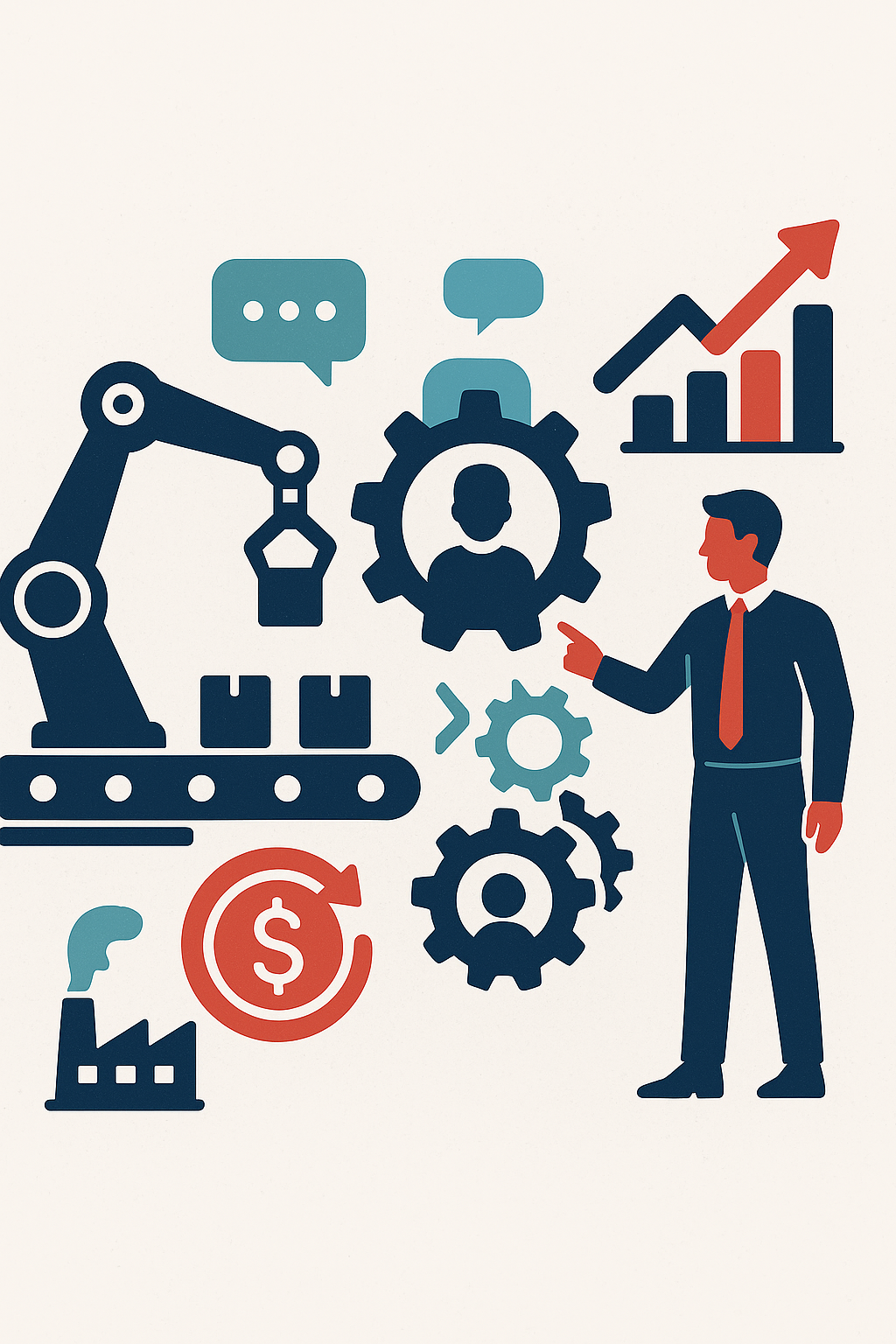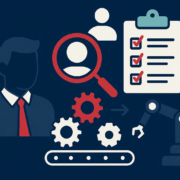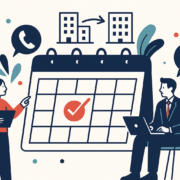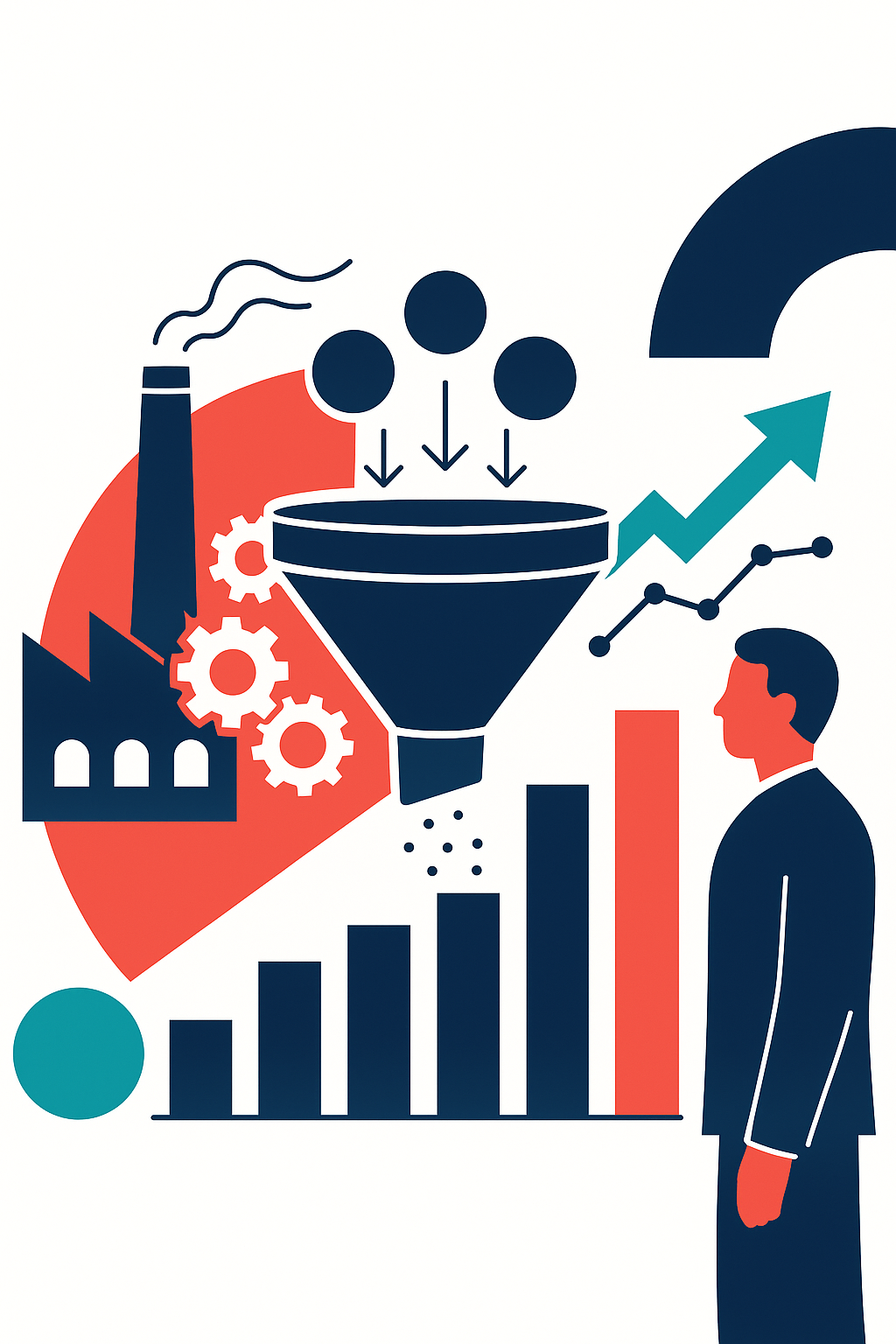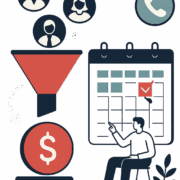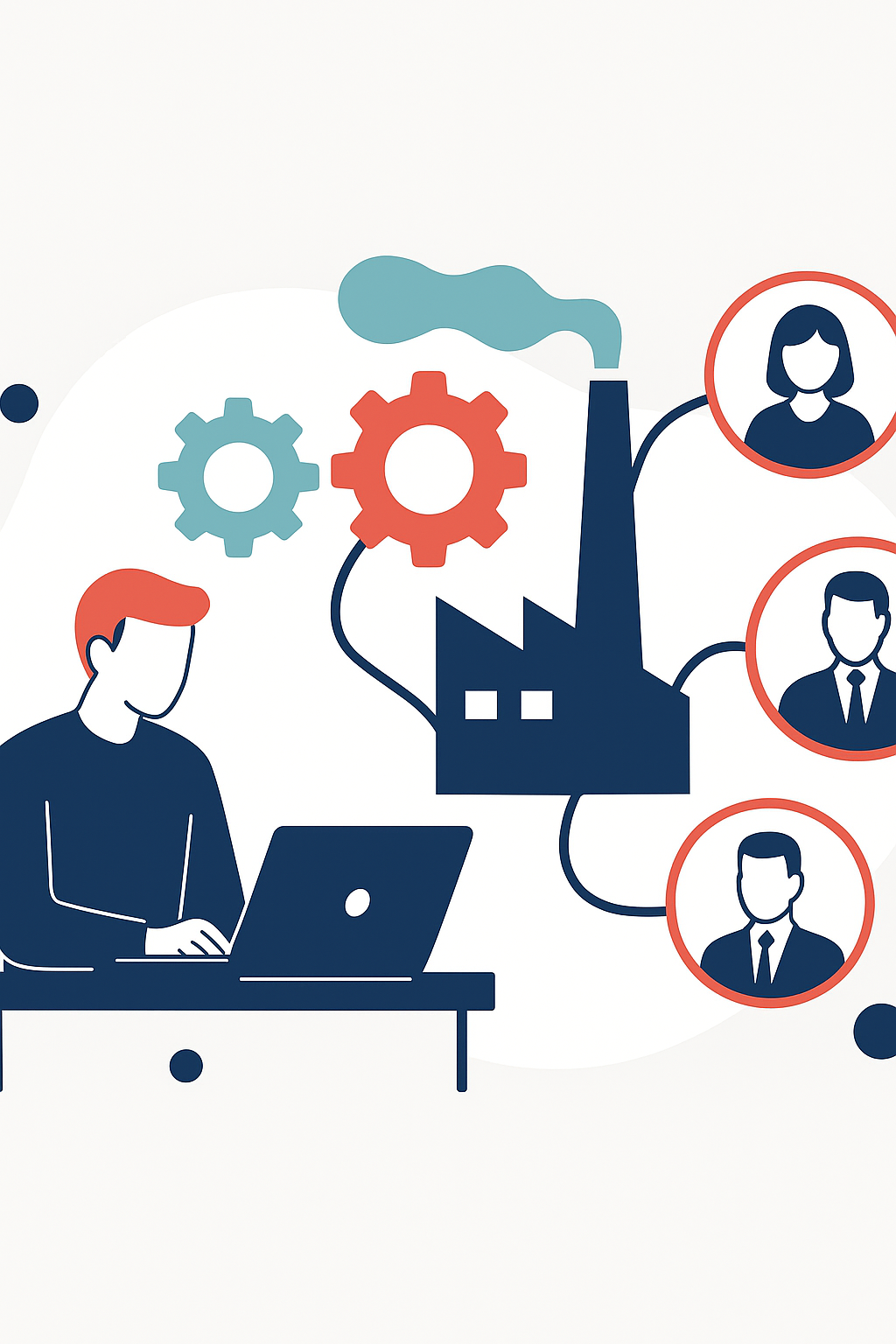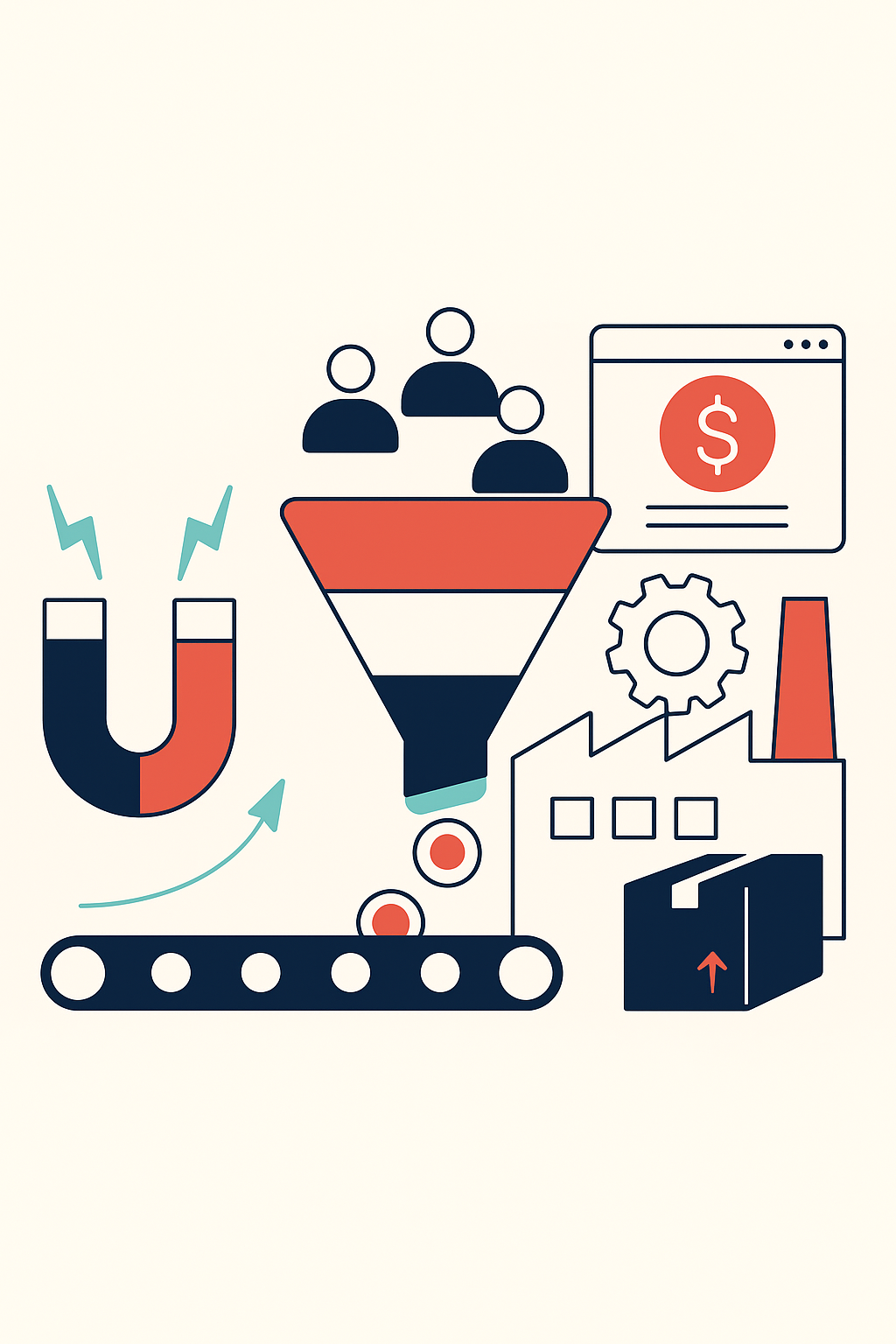Targeted Customer Acquisition for Manufacturing Growth
In today’s competitive manufacturing landscape, simply making a great product is not enough. Reliable revenue growth demands a strong pipeline of qualified leads ready to convert. That is where manufacturing customer acquisition services come in. These specialized solutions help manufacturers generate consistent inbound and outbound demand, nurture high-quality leads, and build predictable sales results.
With so many agencies, platforms, and consultancies offering acquisition help, choosing the right partner can be daunting. This guide walks you through the key considerations- features, business models, price structures, and proven use cases- to help you select the ideal fit for your manufacturing business.
Understanding Manufacturing Customer Acquisition Services
Manufacturing customer acquisition services include:
- Targeted lead generation: Identifying and capturing decision makers in industries like automotive, aerospace, industrial equipment, or heavy machinery.
- Outbound sales outreach: Building cadences of emails and calls to engage prospects directly.
- Account‑based marketing (ABM): Focusing on high-value prospects at specific companies with tailored campaigns.
- Inbound marketing and SEO: Attracting organic traffic via industry content, whitepapers, and case studies.
- Lead qualification and sales alignment: Filtering inbound interest, qualifying leads, and seamlessly handing over to sales teams.
These services are usually delivered by marketing agencies or outsourced demand teams, though sometimes via platforms you manage in-house. The goal is consistent lead flow aligned with manufacturing cycles and budgets.
Why Manufacturers Need Dedicated Acquisition Support
Manufacturers face unique challenges:
- Complex sales cycles: Decisions may take months or years, with multiple influencers across engineering and procurement teams.
- Niche buying committees: Target buyers may be extremely specific-such as marine HVAC system engineers or plant maintenance directors.
- Competing on differentiation: Value comes from solutions, not just products. You must articulate ROI, performance, and service.
- Limited in-house capacity: Sales and marketing teams in manufacturing companies are typically small or under‑resourced.
Manufacturing-specific customer acquisition services tackle these issues by providing:
- Specialized lists for highly technical personas
- Strategic account prioritization to target high-value prospects
- Deep content expertise to speak the language of engineers and technical buyers
- Longer nurture strategies that build familiarity and trust
This makes them more effective than generalist B2B marketing agencies.
Key Features & Capabilities
When evaluating providers, look closely at the following core capabilities:
Campaign Approach
- Outbound cadencing: Multi-channel email, calls, and social outreach designed to engage technical decision makers.
- Inbound strategies: Content like whitepapers, product case studies, and thought leadership optimized for SEO.
- Account engagement: Personalized campaigns for key accounts, including IP-targeted display and customized emails.
Data & Targeting
- Access to quality contact and account data: verified emails, phone numbers, technographic and firmographic attributes.
- Ability to enrich existing lists with purchase signals or AI‑driven data.
- Audience segmentation by industry, company size, geography, or manufacturing vertical.
Content & Messaging
- Messaging that reflects product specs and technical metrics.
- High-value assets, like ROI calculators or application videos.
- Localization capabilities if you sell globally.
Lead Qualification & Handoff
- Granular lead-development scoring based on interaction, intent, and fit.
- Defined lead quality thresholds before handoff to sales.
- Clear joint processes aligned with CRM systems like HubSpot, Salesforce, or Pipedrive.
Nurture & Workflow
- Long chain nurturing sequences with email and retargeting.
- Automated re‑engagement loops for idle contacts.
- Triggered follow-up after specific actions like video views or downloads.
Performance Reporting
- Custom dashboards covering lead volume, conversion rates, cost-per-lead, and pipeline contribution.
- Funnel reporting from awareness to opportunity.
- ROI projection for marketing spend.
Pricing Models Explained
Different providers price their services in various ways:
Retainer-Based Agency
- Flat monthly fee (e.g., $6,000–$15,000+/month) for integrated marketing and outbound execution.
- Pros: Strategic continuity, access to the full team.
- Cons: Minimum commitment period required.
Pay-per‑Lead
- You pay for each qualified lead (e.g., $150-$600 per MQL).
- Pros: Predictable cost per outcome.
- Cons: Less control over message, and lead volume may fluctuate.
Performance-Based (Revenue Share)
- Agency earns based on closed deals sourced via their efforts—often 5% to 20% of transaction value.
- Pros: Shared financial incentive.
- Cons: Complex tracking and revenue attribution.
Hybrid
- Base retainer plus reduced cost per lead or success fee.
- Pros: Balanced risk and commitment.
- Cons: Requires more detailed structuring and tracking.
Use Cases & Real Examples
Let’s review how manufacturing companies use these services to solve common pain points:
Launching a New Product Line
- Case: An automation manufacturer launching a new sensor system for food & beverage plants needed to generate interest.
- Solution: ABM + inbound SEO content targeted at CID manufacturers.
- Results: 25 qualified leads, 40% proposal rate, $1.2M booked within 6 months.
Expanding into a New Geography
- Case: A metal press OEM looking to grow its footprint in the Midwest.
- Solution: Enriched data targeting OEMs and Tier 2/3 suppliers within a 500-mile radius.
- Results: 60% open rate on direct outreach, 18 qualified meetings booked in 3 months, pipeline grew by $5M.
Balancing Sales Peaks and Troughs
- Case: Tier‑1 plastics manufacturer with seasonal revenue dips.
- Solution: Set a monthly retainer outbound service with a 4-step call + email cadence.
- Results: 35% increase in MQLs during off-season, reducing seasonal revenue dip by 22%.
Nurturing Quoted-but-Lost Accounts
- Case: Industrial fastener brand had 200+ quotes, but many were unconverted.
- Solution: Email nurture series with restatement of specs, ROI comparisons, and trust content.
- Results: 15% uplift in conversions, $380,000 revived revenue.
How to Choose a Provider: A Step-by-Step Guide
Here is a step-by-step framework to compare providers smartly:
Define Your Goals
- What specific business goals do you want to achieve? Increased demo volume, OEM leads, territory expansion, or steady MQL flow?
Non-Negotiables
- Do you need tech‑savvy marketers or ABM specialists? Check for industry references.
- What systems do you need them to integrate with (CRM, Marketing Automation, ERP)?
Evaluate Data Quality
- Ask about sample contact lists, list refresh frequency, enrichment tools, bounce and hard bounce rates.
Measure Technical Messaging Expertise
- Review writing samples: whitepapers, product sheets, email scripts.
- Ask about domain knowledge: Can they describe your product specs accurately?
Understand the Model
- Ask providers to walk through an ideal campaign for your business.
- Check for clarity around pricing, billing, and lead definitions.
Establish Lead Definition
- Agree jointly on what makes a qualified lead: title, company size, budget, and project relevance.
- Ensure that both marketing and sales have shared expectations.
Confirm Reporting and Transparency
- Require weekly or monthly dashboards.
- Ask for trace-back reports showing who replied, opened, downloaded, etc.
Pilot Before Full Engagement
- Negotiate a short-term pilot (60-90 days) to evaluate fit before committing longer.
Common Buyer Questions (FAQs)
Do I need manufacturing-specific providers, or can I use general B2B agencies?
Manufacturing-focused providers bring knowledge of engineering buying cycles, jargon, specifications, and trade show cadence. They are better equipped to craft messages that resonate with procurement and technical buyers.
How many leads per month should I expect?
Outcomes vary depending on complexity. For simple OEs, 5-15 MQLs per month is typical. For niche industrial segments, 1-5 highly qualified opportunities may hold greater value.
Will these services generate sales or only leads?
They are designed to fuel pipeline. Some agencies offer business development representatives or opportunity development reps to pull deals deeper once leads are qualified.
What if I don’t have CRM or marketing automation set up?
Many agencies will include implementation support for free or at low cost if needed. Check if they can help with Salesforce, HubSpot, or other platforms.
How long before ROI?
Manufacturing cycles take time. Expect 3–6 months before steady pipeline results. ABM use cases may take longer (6-12 months).
Checklist: What to Look For in Vendor Evaluation
| Category | Checklist Item |
| Experience | Case studies in manufacturing verticals, length of service |
| Targeting | Quality of lists, segmentation capability, data sources |
| Content & Messaging | Technical fluency, spec content, asset production experience |
| Lead Handling | Lead handoff process, CRM alignment, sales enablement |
| Pricing Transparency | Clearly defined retainer, CPL, or success metrics |
| Reporting | Regular dashboards, visibility into funnel metrics |
| Flexibility | Ability to run pilots, adjust cadence, test new segments |
| ROI Example | Cited revenue or quote uplift metrics from past clients |
Avoid These Costly Pitfalls
- Choosing purely on price: Cheaper options often lack proper targeting or technical messaging.
- Ignoring lead quality: A high volume of unqualified contacts wastes sales time and hurts internal trust in marketing.
- Neglecting mid- and late‑stage nurture: Many services drop off once a lead replies, even if it’s not yet an opportunity.
- Bypassing alignment: Without shared definitions and CRM accountability, leads can fall through the cracks.
- Skipping evaluation time: Launch with a clear performance window and success criteria- don’t sign long before you test the output.
Why Sapper Is Your Best Choice
At Sapper, we specialize in customer acquisition solutions tailored to engineering‑driven businesses. Here’s how we deliver results:
- Proprietary manufacturing-rich database, covering OEM and Tier 2 executives across industries
- Blend of outbound, inbound, and ABM, ensuring coverage across buying stages
- Technical messaging professionals, including copywriters with engineering backgrounds
- Transparent lead qualification, aligned with your sales team and CRM
- Flexible pricing, with pilot engagement models allowing you to test fit before scaling
- Deep industry experience and success record, delivering pipeline and revenue growth across hundreds of accounts
Final Thoughts
Choosing the right manufacturing customer acquisition service is critical for driving growth, scaling your sales efforts, and standing out in competitive industrial sectors. You can make an informed decision by assessing providers on data quality, messaging expertise, pricing model, reporting transparency, and manufacturing experience.
With the right partner, you will convert complexity into clarity, inconsistent leads into pipeline, and marketing spend into measurable returns. Download Sapper’s full capabilities deck or request a pilot engagement to experience the difference.

